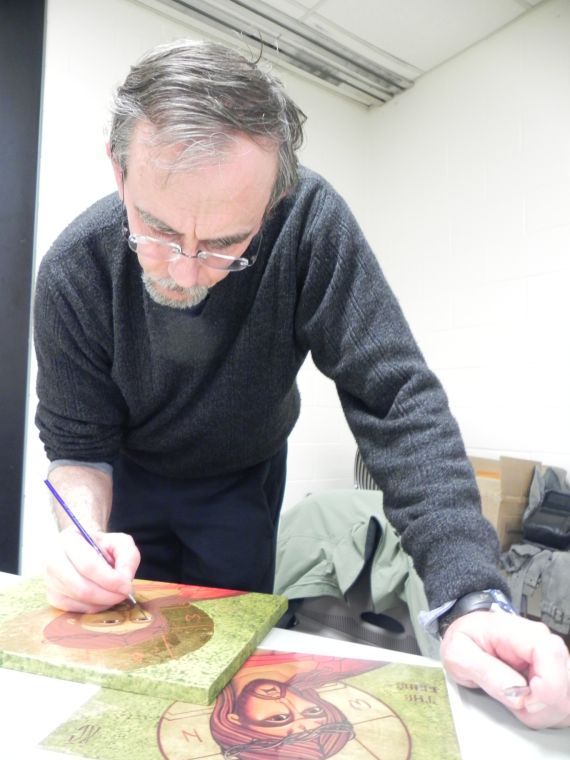
In 12th-century Sicily, where many people were Orthodox, even some Catholic churches did without the keys, using instead a crossĬartlidge and Elliott (142-43) explain two theories for the curly hair and short, square beard. Catherine on Mount Sinai, but generally they are much less common in the art of the Orthodox churches, which do not recognize papal supremacy. Peter holds the keys in a 7th-century icon in the Monastery of St. Veronese's Sacra Conversazione (1540-43),īut in most images I have examined the keys are the same gray color. Molanus even advises that one key should be gold and the other silver, to symbolize the Pope's powers of absolution and excommunication respectively (301). Some santos in Mexico emphasize the papal connection by also giving Peter a triple tiara And whatsoever thou shalt bind upon earth, it shall be bound also in heaven: and whatsoever thou shalt loose upon earth, it shall be loosed also in heaven." Roman Catholicism points to this passage as supporting papal supremacy. The keys refer to Jesus' statement to Peter in Matthew 16:19, "I will give to thee the keys of the kingdom of heaven. Since at least the 4th century he has been portrayed with curly hair and a short, square beardĪnd since at least the early 6th in the West he has carried a set of keys as his attribute Saint Peter is almost always easily recognized. Paul, held in equal honor, was punished with a sword and buried on the Via Ostensis. He is reverently celebrated by the whole world. Peter was crucified with his head pointed down to the ground and was buried on the Vatican hill near the Via Triumphalis. They suffered and died on the same day of the same year, under the Emperor Nero. Many Orthodox and Eastern Catholic religious homes have icons hanging on the wall or in the Icon corner.Not their birthday but the day they died and were "born again" into Heaven
Iconographer now portable#
Iconostasis also refers to a portable icon stand that can be placed anywhere within a church. In Orthodox and Eastern rite ( Byzantine ) Catholic churches, the naveis typically separated from the sanctuary by an iconostasis(Russian: ikonostas)Īlso called the templon - a wall of iconsand religious paintings. Thus to kiss an icon of Christ, in the Eastern Orthodox view, is to show love towards Christ Jesus himself, not mere wood and paint making up the physical substance of the icon. The Eastern Orthodox teaching regarding veneration of icons is that the praise and veneration shown to the icon passes over to the archetype (Basil of Caesarea, On the Holy Spirit 18:45: "The honor paid to the image passes to the prototype"). Today icons are used particularly among Eastern Orthodox, Oriental Orthodox, Copticand Byzantine Catholic Churches.

It is far more common for an icon to be copied from an older model, though with the recognition of a new saint in the church, a new icon must be created and approved.

Icon painting, in general, is not an opportunity for artistic expression, though each iconographer brings a vision to the piece. For this reason, icons tend to be formulaic, following a prescribed methodology for how a particular person should be depicted, including hair style, body position, clothing, and background details. are filled with symbolism designed to convey information about the person or event depicted. : Russian icons, Greek icons, Serbian icons etc. The Eastern Orthodox believe that the first icons of Christ and the Virgin Mary were painted by St. The term 'icon' - icona, ikona, икона (Russian) comes from the Greek word eikona (εἰκών, eikōn, ) which simply means image. Welcome to the world of Byzantine Iconography !īyzantine Iconography – is the oldest and only Christian art form survived unchanged for the past 2000 years.


 0 kommentar(er)
0 kommentar(er)
